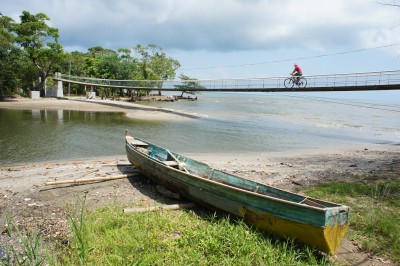
Guatemala: or Should I Say Guatemaya
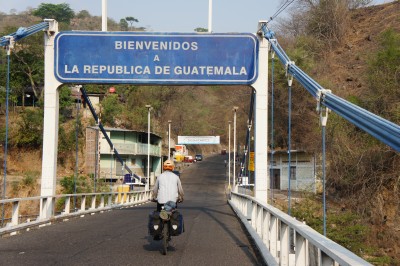
It all started with a long and steep uphill, after an easy descent from El Salvador. I could hear Maya muttering under her breath: “I hate Guatemala”. After all, no other country we have visited on this trip dared to serve us roads with grades of up to 20%. We often found ourselves pushing our bikes uphill, and in some cases downhill. On one occasion I could smell our brake pads roasting, and got a small burn from passing my finger too close to the disc.
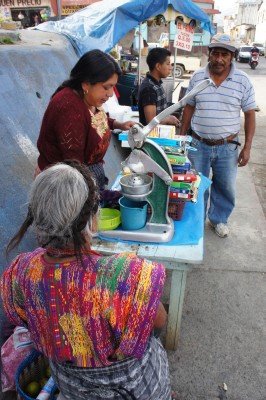
Several times in Guatemala we exclaimed: “we’ve arrived to a different country”. After the intense uphills of the mountainous highlands, arriving to the flat lowlands was a relief and a complete change of scenery and weather. Intersecting the tourist trail for the first time in a while in Antigua, a beautiful colonial city, was a relief after a night at a mosquito ridden sex hotel in Villa Canales, and warnings about assaults on the road we had intended to take.
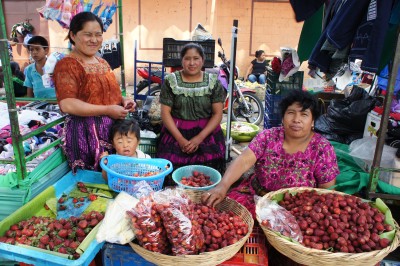
The food in Guatemala was a refreshing change – beef tacos on street corners, thick and puffy hand made flour tortillas filled with chicken or steak, and an occasional ceviche. On our second day in Guatemala, we spent the morning crawling up a long hill on the main road, arriving to a desolate crossroads at lunchtime, hungry, rewarded with just a beaten stall with signs advertising hot dogs. On closer look, they were serving some of the best sandwiches – soft fresh buns, avocado, chicken cooked in tomato sauce, ketchup, mayonnaise, mustard, the works. Fresh orange juice stands made a comeback, although the locals seem to prefer theirs with additives which promise to boost energy levels or sexual desire.
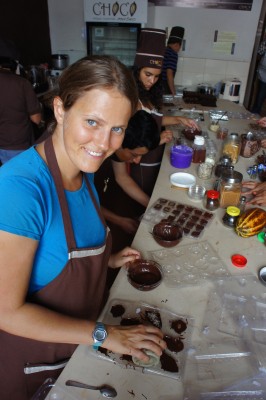
Leaving Antigua, we rode along the cobbled stone streets, our bikes rattling the whole way. A flock of road cyclists zoomed by us, in the midst of a race. In San Juan Sacatepequez (a tongue twister), we looked at five hotels, all yucky sex hotels, at some of which we couldn’t view any rooms, since they were all occupied by the hourly crowd. It was too late to leave town, and Maya was on the verge of despair. Somehow I discovered that there is a wooden home-style bible camp in town, where we could stay if we ask nicely. Early the next morning, the town square had been converted into a lively bustling market, with many vendors setting up on the road, and most wearing colourful Maya outfits.

The next day we cycled down a steep road which kept getting smaller and rougher, not inspiring confidence that we were on the right road. Eventually we arrived to the grand Rio Motagua, which used to have a bridge across it, but it was washed away some years ago. Roberto and his father work year round at ferrying people, goods and motorbikes across the river, using a float made of several inner tubes and a thin wooden board. We camped across the river, where Miguel told us he would be flying to the US in several days and would be carrying various packages for relatives, including four chicken from their yard.
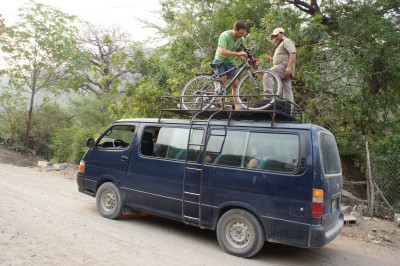
We caught a small minivan up to Salama, to avoid yet another crazy uphill. Despite being in the middle of nowhere, down a gravel road, with pigs running this way and that, what was the girl next to me busy doing on the ride? Updating her Facebook profile on her Blackberry, of course, while her friends were sitting on the roof of the van on their way to school.
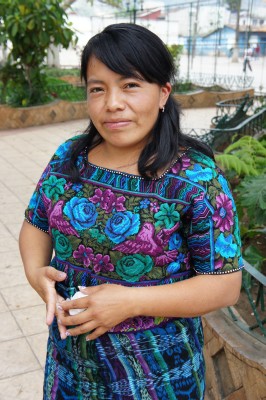
Guatemala is well known for the Maya people’s colourful embroidered dresses. It’s amazing how elaborate and totally different the designs are one from another, and the dresses take several months to make. In the lowlands, the fashion shifted towards thinner, half see through tops, likely a traditional adaptation to the heat, that nevertheless flies in the face of the conservative popular fashion in the country. I often wonder why it is that in many parts of the world, including North America, it is the social convention that women wear colourful clothing, and men wear drab outfits.
It took us three days to cycle the back road to Rio Dulce, a dusty gravel road, which is in the process of being paved. We stopped to look at a gravel makeshift soccer field, which was covered by coffee beans drying in the sun. A few kids came up to us, curious, and a few minutes later the mother came running. She was suspicious of us, I thought. They only spoke a few words of Spanish, so communicating was difficult, and only when we were leaving did the mother finally smile back at us. I had a flashback to a previous trip to South East Asia, where we could almost never speak to random locals on the street – speaking Spanish has been invaluable in Central America.

We arrived to La Tinta in the late afternoon, surprised to find a comfy pink colonial looking hotel in such a scruffy town. Our showers are almost always cold showers, and thankfully so. We have taken to yelling “hallelujah” when the first jet of cold water hits our steaming backs. A world in which people take hot showers and enjoy them seems like a distant dream. The next day, After a swim in the Rio Cahaboncito that we hoped would never end (it was hot!), we headed to a local eatery for lunch. Rufina smiled, exposing a row of golden metallic stars on her front top teeth. She barely spoke any Spanish, and taught me the numbers in Kekchi, which I practiced over and over, just to forget them five minutes later.
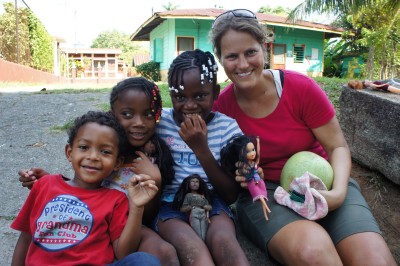
The Carribean town of Livingston stands on its own, only accessible by boat and populated by the dark skinned Garifuna, who have their own unique culture, language and food. We learned how to make tapado, a subtly flavoured coconut milk soup, which often contains a whole fish and crab. In the meantime a group of youngsters were beating Garifuna rhythms on traditional drums, two of which were actually turtle shells.
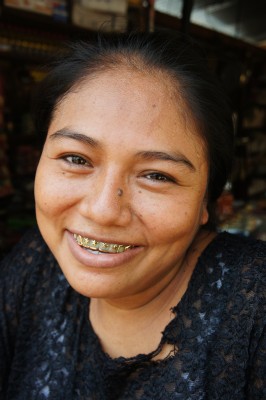
We used public transportation to avoid a scary six lane highway and steep never ending uphills. Arriving to Zacapa in the afternoon, we got off the bus and sought lunch and shelter from the sun at a small eatery. The two owners couldn’t decide amongst themselves if it was 39 or 44 degrees, but both agreed it was very hot. They gave us six large mangoes from their tree and some tomatoes. With our usual system of wetting our clothes every time they dry, we managed to make it up the hill to Chiquimula, where we spent our last night in Guatemala.
Arriving to our hotel was like a scene from a movie, since the owner was showering, and we communicated by shouting, but each sentence had to be repeated several times. Opposite our hotel I stepped into a bicycle shop, appropriately named Bicimaya to get some help with my shifters. Despite the hills, heat, sex hotels and other challenges, in the end even Maya loved Guatemaya.

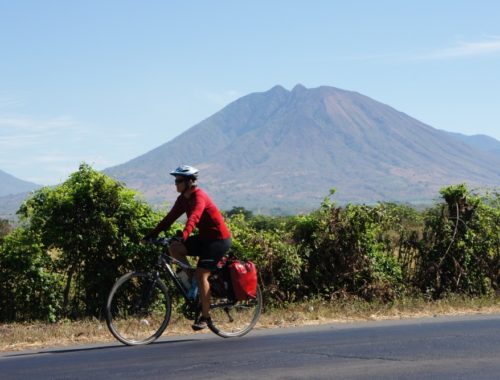
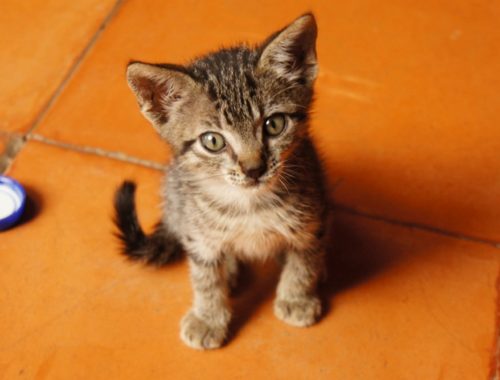
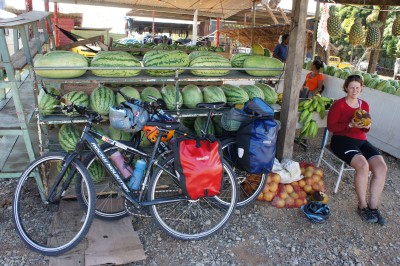
4 Comments
Ron
If you see those orange-and-red berries from photo #89 again, do eat them. Don’t know what they’re called, but they’re delicious!
Gili
Unfortunately, someone objected to me trying the berries, so I may never know what they taste like…
Pingback:
Pingback: